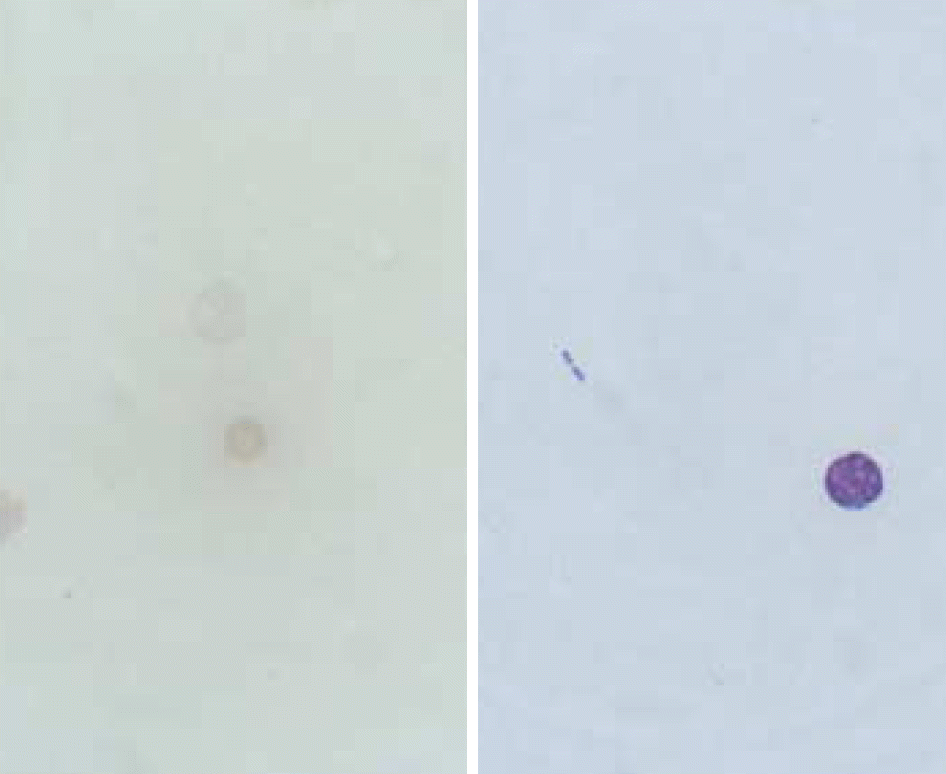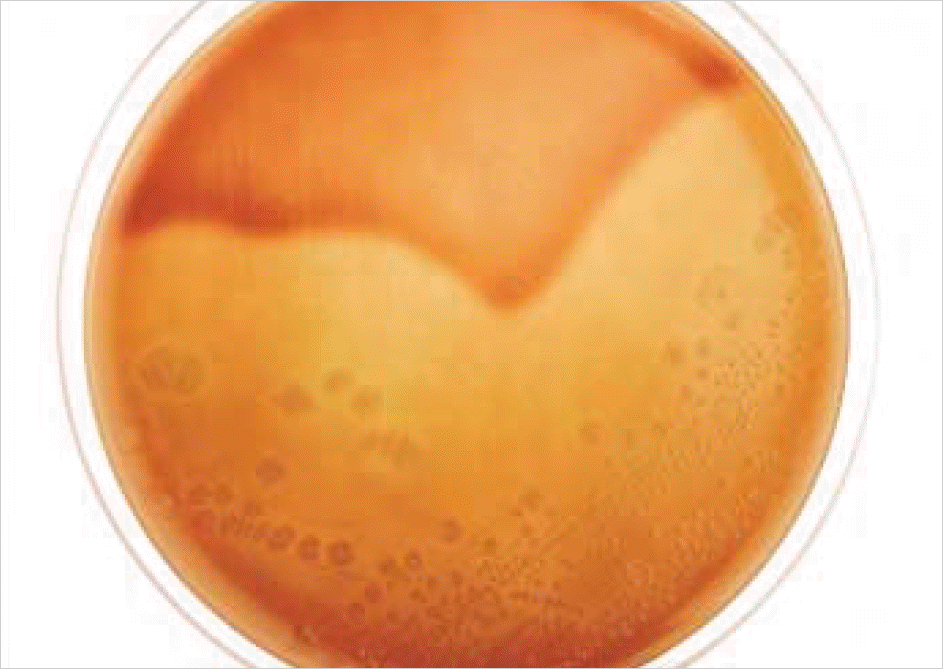Abstract
Massive intravascular hemolysis secondary to Clostridium perfringens septicemia is rare but often fatal. We report a case of a fatal clostridial hemolytic complication in a 71-year-old woman with probable refractory anemia. The patient was admitted to the emergency room due to a comatose mental state and a high fever. Laboratory analysis showed massive hemolysis. She died from severe anemia two hours after admission. The next day, blood cultures grew gram positive cocci and boxcarshaped gram positive rods, which were identified as coagulase-negative staphylococci and C. perfringens, respectively.
References
1. Singer AJ, Migdal PM, Oken JP, Chale SN, Moll UM. Clostridium perfringens septicemia with massive hemolysis in a patient with Hodgkin's lymphoma. Am J Emerg Med. 1997; 15:152–4.
2. Bodey GP, Rodriguez S, Fainstein V, Elting LS. Clostridial bacteremia in cancer patients. A 12-year experience. Cancer. 1991; 67:1928–42.

3. Mera CL, Freedman MH. Clostridium liver abscess and massive hemolysis. Unique demise in Fanconi's aplastic anemia. Clin Pediatr (Phila). 1984; 23:126–7.
4. Meyerhoff A, Renzi RM, Wehbe T, Opal SM. Fatal clostridial sepsis in a previously healthy woman. Clin Infect Dis. 1995; 20:1066–7.

5. Moore A, Gottfried EL, Stone PH, Coleman M. Clostridium perfringens septicemia with detection of phospholipase C activity in the serum. Am J Med Sci. 1976; 271:59–63.
6. Koneman EW, Allen SD, editors. Color Atlas and textbook of diagnostic microbiology. 5th ed.Philadelphia: Lippincort Williams & Wilkins;1997. 768.
7. Lober B. Gas Gangrene and Other Clostridium-Associated Diseases. Mandell GL, Bennett JE, editors. Mandell, Douglas, and Bennett's principles and practice of infectious diseases. 6th ed.Philadelphia: Churchill Livingstone;2005. p. 2828–37.
8. Murray PR, Rosenthal KS, editors. Medical microbiology. 5th ed.Philadelphia: Elsevier Mosby;2005. p. 401–6.
9. Alvarez A, Rives S, Nomdedeu B, Pereira A. Massive hemolysis in Clostridium perfringens infection. Haematologica. 1999; 84:571–3.
10. Spach DH, Liles WC. Antimicrobial therapy for bacterial diseases. Root RK, Waldvogel F, editors. Clinical infectious diseases. A practical approach. New York: Oxford University Press;1999. p. 337–48.
11. Caya JG, Farmer SG, Ritch PS, Wollenberg NJ, Tieu TM, Oechler HW, et al. Clostridial septicemia complicating the course of leukemia. Cancer. 1986; 57:2045–8.

12. Bae IG, Cho YK, Hong SS, Kim SK, Cho YH, Chung DR, et al. A case of liver abscess with sepsis caused by Clostridium perfringens. J Korean Soc Chemother. 1999; 17:239–44.
13. Gutierrez A, Florencio R, Ezpeleta C, Cisterna R, Martinez M. Fatal intravascular hemolysis in a patient with Clostridium perfringens septicemia. Clin Infect Dis. 1995; 20:1064–5.
Fig. 1.
Peripheral blood smear showed rare intact red cells with spherocytes, and occasional rod-shaped microorganisms (× 1,000). But it was not determined whether the microorganisms were pathogens or contaminants.

Fig. 2.
Colonies grown on blood agar plate showed double zone hemolysis, which comprised an inner zone of complete hemolysis and an outer zone of incomplete hemolysis.

Table 1.
Results of laboratory tests except complete blood count




 PDF
PDF ePub
ePub Citation
Citation Print
Print


 XML Download
XML Download